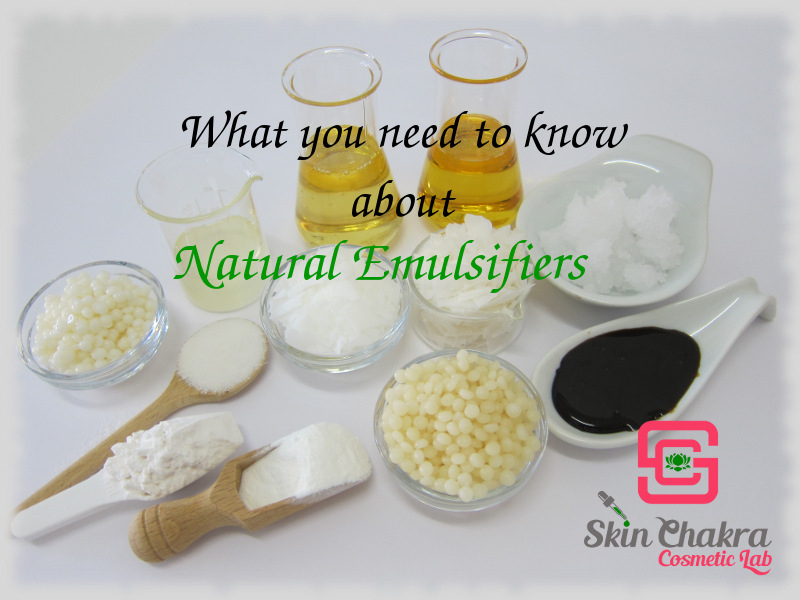The link between emulsifiers and sensory experience
Emulsifiers: Secret Active Ingredients for Attaining Perfectly Combined Formulations
Emulsifiers play a crucial role in producing secure combinations of immiscible liquids, such as oil and water. Their special buildings allow them to minimize surface area stress, which is crucial for uniformity in various formulas. Recognizing the distinctions between all-natural and synthetic emulsifiers can influence item top quality considerably. As industries progressively look for to boost appearance and rack life, the option procedure for the right emulsifier becomes vital. What variables should be considered in this vital option?
Understanding Emulsifiers: What They Are and How They Function
Emulsifiers may seem like a simple enhancement to formulas, they play a necessary function in supporting mixes of components that generally do not blend well, such as oil and water. These compounds operate by decreasing surface tension at the user interface in between immiscible liquids, allowing them to blend even more consistently. Emulsifiers have both hydrophilic (water-attracting) and lipophilic (oil-attracting) homes, which enable them to secure themselves at the border of the 2 phases. By doing so, they create a protective obstacle that stops the droplets of one fluid from integrating into bigger masses, therefore keeping a secure emulsion. The efficiency of an emulsifier depends on its molecular framework, which affects its ability to maintain blends. In numerous applications, from food items to cosmetics, emulsifiers guarantee a consistent appearance and look, improving both functionality and customer appeal. Their importance can not be overemphasized in achieving well-blended solutions.
Sorts of Emulsifiers: Artificial vs. natural
Emulsifiers can be extensively categorized right into two kinds: synthetic and all-natural, each offering distinct benefits and applications. Natural emulsifiers, derived from plant or pet resources, include gum tissue, lecithin, and casein arabic (emulsifiers). These emulsifiers are frequently preferred in organic and clean-label products because of their minimal processing and biocompatibility. Their gentle nature makes them appropriate for delicate formulations, specifically in food and cosmetics

On the other hand, synthetic emulsifiers such as mono- and diglycerides, and polysorbates are produced through chemical processes. They are frequently made use of in commercial applications as a result of their stability and efficiency in creating emulsions. Synthetic emulsifiers often display remarkable efficiency in severe problems, such as high temperatures or varying pH levels. The selection between all-natural and artificial emulsifiers greatly relies on the details solution needs, regulatory considerations, and consumer preferences, influencing their effective application in various industries.
Functions of Emulsifiers in Food and Cosmetic Formulas
The function of emulsifiers prolongs beyond simple stabilization; they are fundamental in achieving the desired structure, shelf, and appearance life of food and cosmetic items. In food solutions, emulsifiers aid mix oil and water, producing uniform and smooth structures necessary for sauces, dressings, and milk products. They lower surface area tension, enhancing the stability of emulsions, which prevents splitting up and extends quality.
In cosmetics, emulsifiers ensure that ingredients, such as oils and water, mix effortlessly, enhancing and supplying a positive feel application. emulsifiers. They contribute to the product's viscosity and spreadability, vital for creams, creams, and lotions. Additionally, emulsifiers can encapsulate active components, enhancing their circulation and effectiveness in solutions. By managing appearance and improving sensory attributes, emulsifiers play an essential function in meeting customer expectations in both food and cosmetic sectors, assuring items are not just attractive however additionally functionally effective
Choosing the Right Emulsifier for Your Item

In addition, the target application-- whether for food, cosmetics, or pharmaceuticals-- will certainly influence the selection. Food-grade emulsifiers need to comply with security guidelines, while aesthetic emulsifiers may call for skin compatibility. Assessing variables such as HLB (Hydrophilic-Lipophilic Balance) assists in forecasting emulsifier habits in details formulations. Inevitably, a complete assessment of both regulatory factors to consider and useful requirements is necessary to select the most reliable emulsifier, making certain the final product fulfills the desired quality and security requirements.

Tips for Effective Emulsion Development and Stability
Achieving successful solution formation and security needs mindful interest to a number of vital factors. The selection of emulsifier plays a critical duty; it ought to be suitable with the oil and water phases to assure efficient stabilization. Second, the ratio of oil to water should be well balanced, as an improper proportion can lead to instability. Third, the mixing procedure should be managed; high shear mixing can help attain smaller droplet dimensions, boosting stability.
Temperature level also affects emulsion security; preserving optimal temperatures during formulation protects against premature splitting up. Additionally, including stabilizers such as thickeners can additionally enhance thickness, reducing the possibility of stage splitting up. Performing thorough stability examinations after solution will assist recognize prospective problems, enabling for modifications before final production. By sticking to these standards, formulators can attain consistent and trustworthy solutions that preserve their preferred residential or commercial properties over time.
Often Asked Inquiries
Can Emulsifiers Be Used in Vegan Formulations?
Yes, emulsifiers published here can be used in vegan formulations. Many plant-based emulsifiers, such as lecithin from soy or sunflower, offer reliable mixing without animal-derived components, making them appropriate for a variety of vegan products.
What Are Common Irritants in Emulsifiers?
Typical allergens in emulsifiers consist of soy, dairy products, and eggs, as specific emulsifiers are originated from these sources. Additionally, some people might react to ingredients or chemicals made use of together with emulsifiers in various formulations.

How Do Emulsifiers Impact Service Life of Products?
Emulsifiers improve product stability by stopping splitting up of active ingredients, consequently expanding rack life. They minimize spoilage caused by microbial development and oxidation, leading to prolonged freshness and improved quality in various food and cosmetic formulations.
Exist Any Type Of Health And Wellness Concerns Connected With Emulsifiers?
Research study suggests possible wellness worries connected with emulsifiers, including gut microbiome modifications and inflammation. While regulatory bodies usually consider them safe, ongoing researches proceed to explore lasting impacts on health and general well-being.
Can Emulsifiers Improve Taste or Scent in Formulations?
Emulsifiers can boost flavor and aroma in solutions by improving active ingredient dispersion and security. This leads to a more uniform item, enabling flavors to combine effectively, inevitably resulting in an extra pleasurable sensory experience for customers.
Emulsifiers may seem like a simple addition to solutions, they play an essential try this duty in supporting combinations of components that commonly do not blend well, such as oil and water. In food formulas, emulsifiers aid blend oil and water, producing smooth and consistent structures crucial for sauces, dressings, and dairy products. Food-grade emulsifiers need to comply with security laws, while cosmetic emulsifiers may need skin compatibility. Common irritants in emulsifiers consist of soy, dairy, and eggs, as specific emulsifiers are acquired from these resources. Emulsifiers can enhance flavor and scent in solutions by boosting active ingredient diffusion and security.